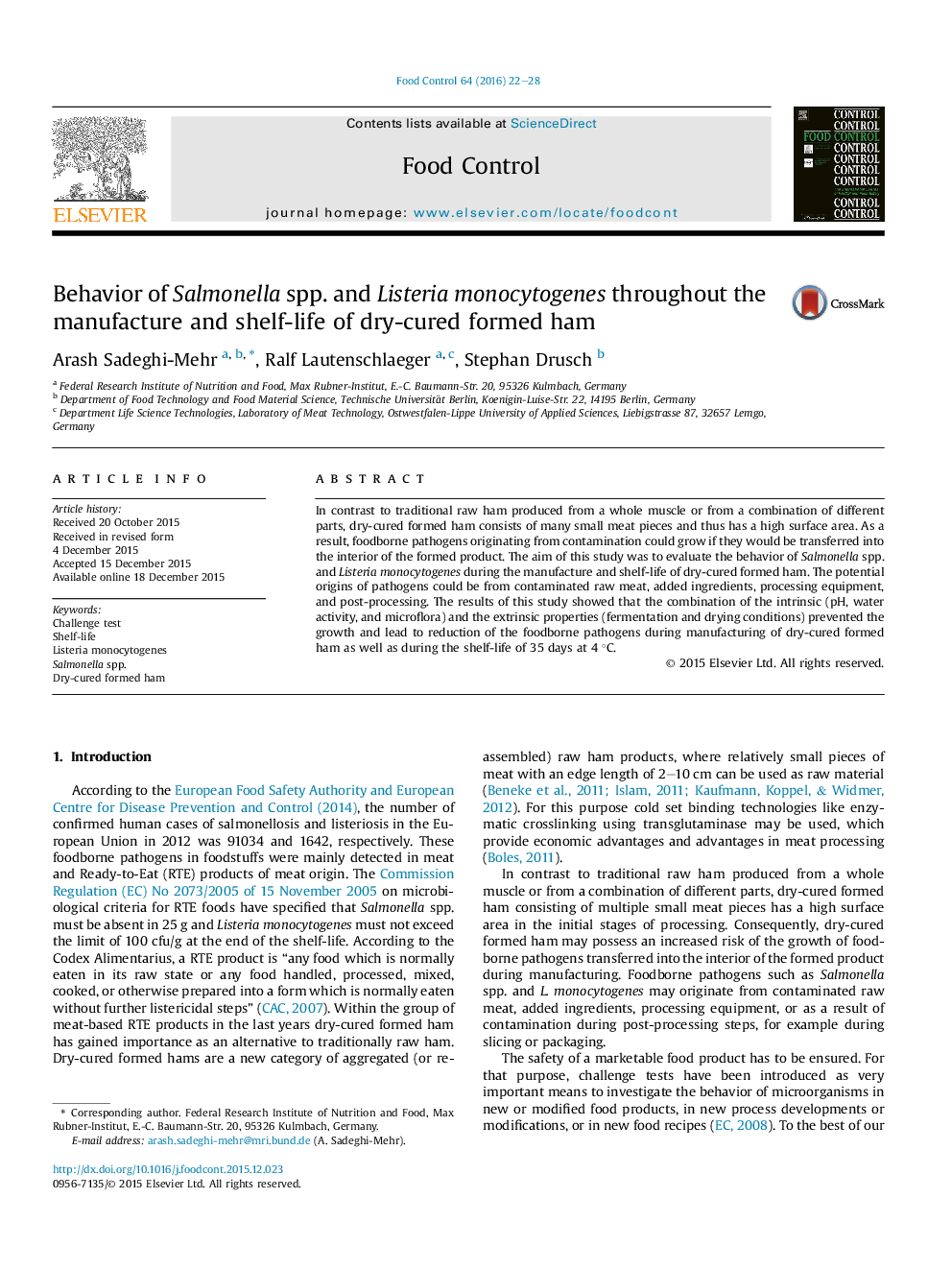| کد مقاله | کد نشریه | سال انتشار | مقاله انگلیسی | نسخه تمام متن |
|---|---|---|---|---|
| 6390153 | 1628398 | 2016 | 7 صفحه PDF | دانلود رایگان |

- Safety of a new category of reassembled raw ham products was investigated.
- Studied pathogens were reduced over production and storage of dry-cured formed ham.
- Sensory analyses suggest a minimum shelf-life of 35 days at 4 °C.
In contrast to traditional raw ham produced from a whole muscle or from a combination of different parts, dry-cured formed ham consists of many small meat pieces and thus has a high surface area. As a result, foodborne pathogens originating from contamination could grow if they would be transferred into the interior of the formed product. The aim of this study was to evaluate the behavior of Salmonella spp. and Listeria monocytogenes during the manufacture and shelf-life of dry-cured formed ham. The potential origins of pathogens could be from contaminated raw meat, added ingredients, processing equipment, and post-processing. The results of this study showed that the combination of the intrinsic (pH, water activity, and microflora) and the extrinsic properties (fermentation and drying conditions) prevented the growth and lead to reduction of the foodborne pathogens during manufacturing of dry-cured formed ham as well as during the shelf-life of 35 days at 4 °C.
Journal: Food Control - Volume 64, June 2016, Pages 22-28